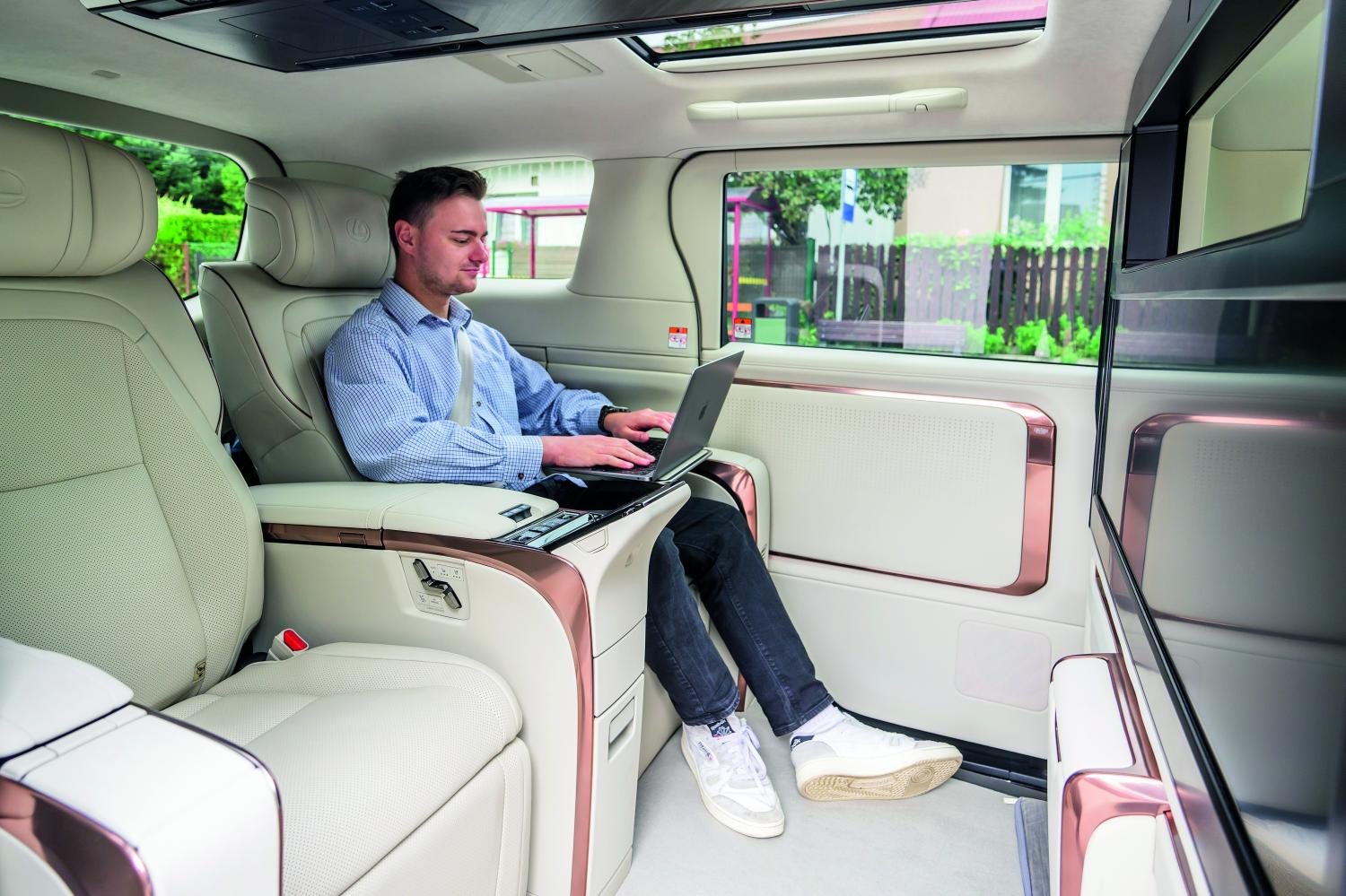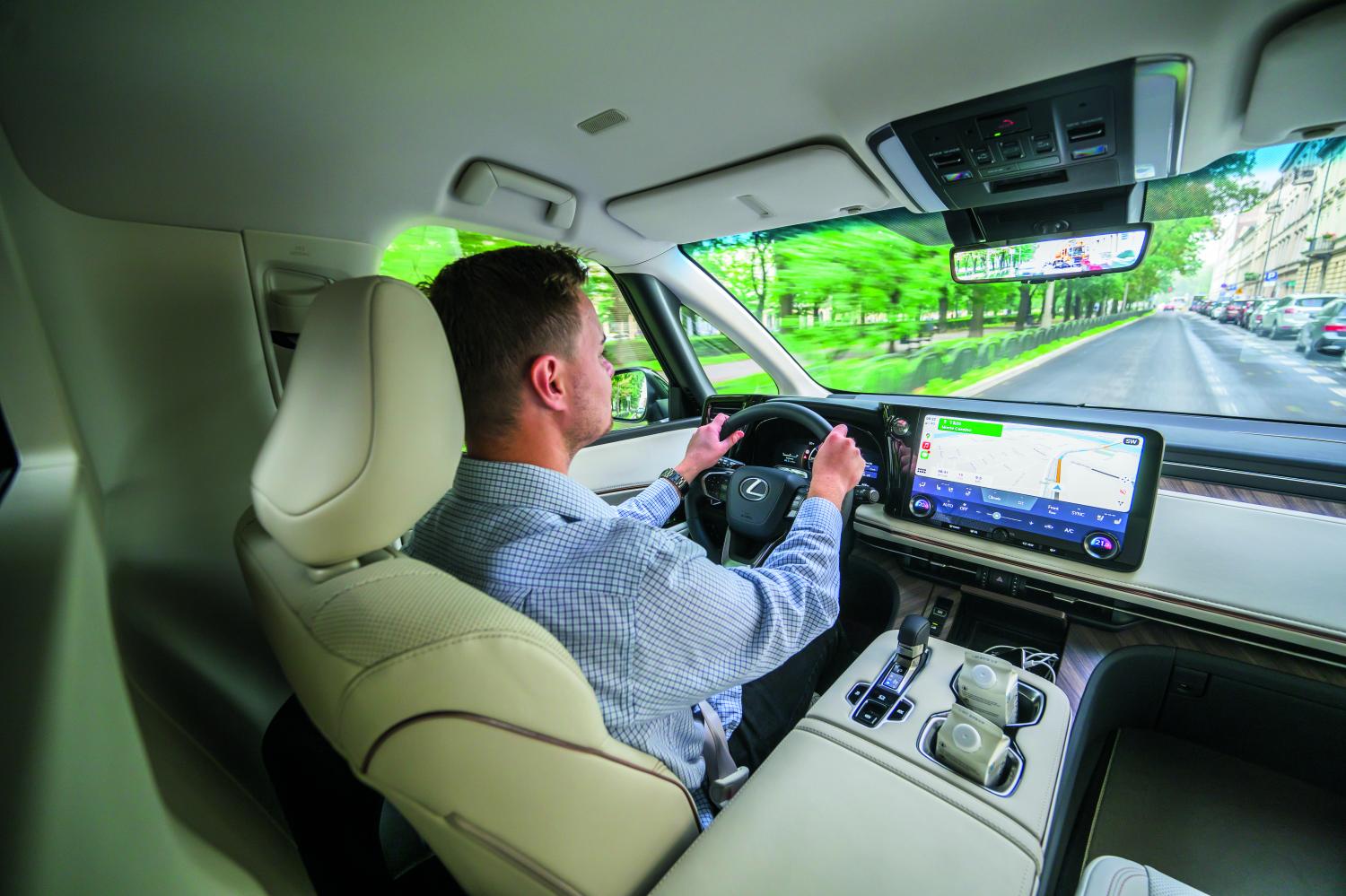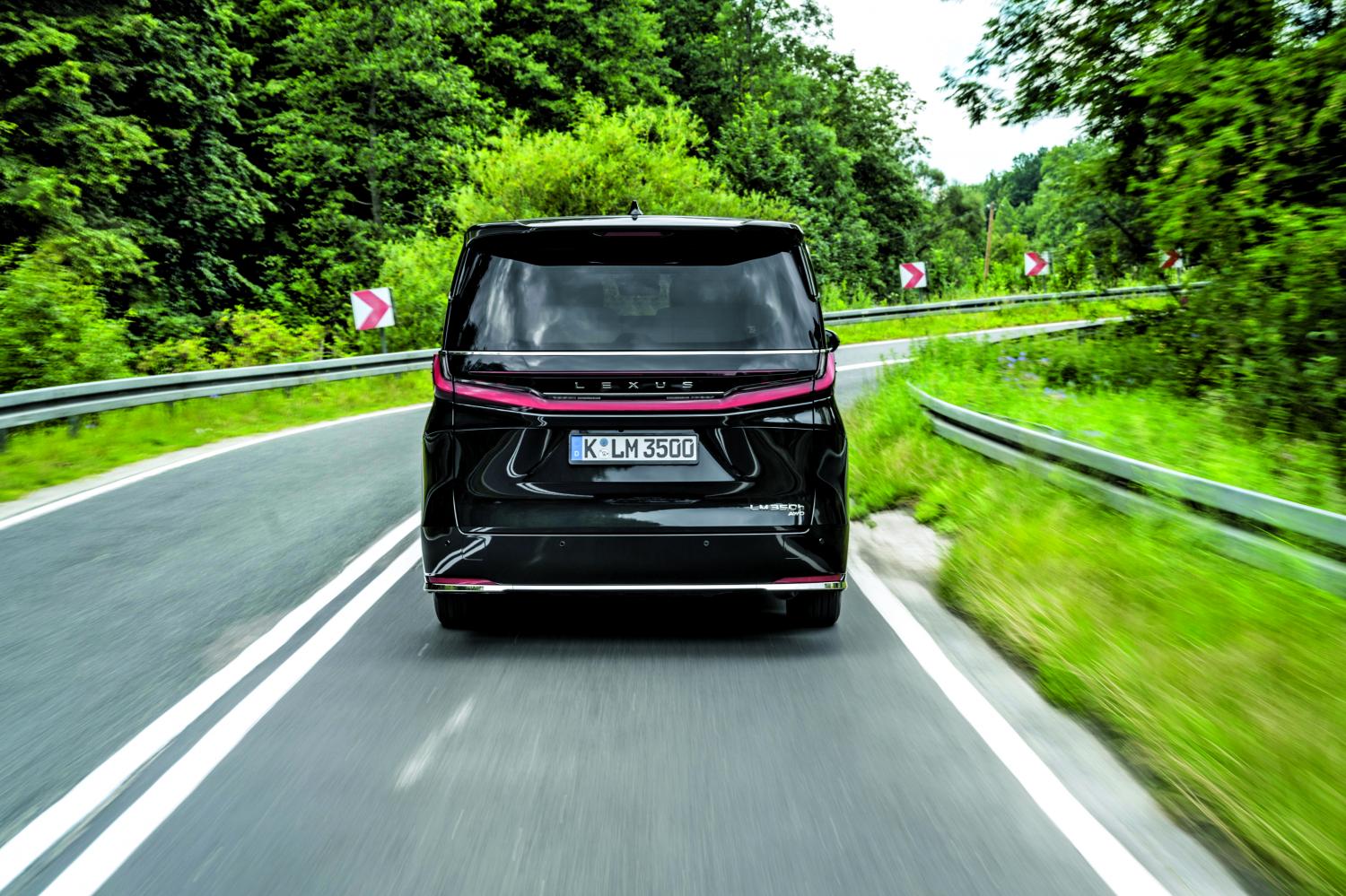Incongruous it may seem, but the formula behind the new Lexus LM is clearly an enticing one.
Executives grin and raise an eyebrow when pressed to name any rival cars but do acknowledge that the LM will be considered in the same vein as the priciest versions of the Mercedes-Benz V-Class. Crucially, though, while even the most sumptuous versions of the V-Class still ride on a van platform, the LM uses the same Toyota Global Architecture as Lexus’s NX and RX SUVs — which, they say, makes for a much more overtly car-like driving experience while facilitating the levels of noise and bump isolation necessary to justify a 7.59 million baht high-end price tag.
In the range-topping four-seat LM, each occupant gets their own tablet device for access to a dizzying array of seat settings and controls for the electronic roof and window blinds, ambient lighting, TV volume and doors. It’s a nice touch, if an unnecessary one, given that buttons and switches for all of the above are hosted in a nicely formatted control panel in the ceiling, airliner style.
Lexus says the LM is as much a mobile office as it is a living space, and indeed it’s better equipped than many a city boardroom. The massive, 48-inch screen can be plugged into two laptops at once to allow maximum productivity, and there are tray tables that fold and flip out of the armrests, aeroplane-style, to host a laptop or tablet.
At a steady cruise, it’s eminently possible to get some decent work done and forget you’re moving entirely. The windows are colossal so that you’re always aware of the LM’s orientation and speed and the seats are painstakingly structured to minimise body sway and head roll so that you can keep your eyes on a screen or a printed page without getting nauseous.
Twistier roads probe the limits of this sense of isolation, when your laptop starts sliding from side to side and you begin to feel ever so slightly peaky, but pop your device in one of the expansive storage cubbies and turn up the ventilated seats and you will soon feel restored.

LM comes in four-seat (with 48in cinema screen) and seven-seat configurations.
The seven-seat LM, starting at 6.29 million baht and available with front-wheel drive, swaps the cinema screen for a more conventional 14-inch device and the fridge for a storage bin, but still occupants are afforded excellent leg room, sufficient gadgetry and enough stowage spaces to keep them satisfied and relaxed.
Both versions convey their rearseat occupants in an immaculately trimmed cocoon of tranquillity, the double-wishbone rear axle tuned for maximum absorption of road imperfections and the active noisecontrol device stopping all but the most pervasive of road and wind noises from reaching the cabin.
There’s a perceptible feeling of quality to every item of switchgear or visible mechanism, too, which only serves to enhance the luxury appeal — and lend credence to the notion that touchscreens and haptic controls aren’t always the answer.
Okay, Parker, pipe down: let’s deal with life up front. Perhaps unexpectedly, given the LM’s rear-biased approach to comfort, Lexus emphasises that the cockpit was designed according to the same driver-focused principles as the latest NX and RX. And indeed, the high centre console, sensibly arranged infotainment interface and chunky steering wheel controls make for an intuitive arrangement that minimises distraction and, crucially, mitigates the need for any preponderate adjustment procedures that might translate into a jittery ride for the VIPs out back.
The cockpit is markedly less decadently appointed than the rear, majoring instead on dependability, logic and ease of use — qualities that will be infinitely more valuable to drivers spending entire days behind the wheel.

Cockpit is driver-focused yet also pampering; 14in touchscreen works well.
The LM uses a full hybrid arrangement familiar from the NX and RX, combining a 2.5-litre four-cylinder Atkinson-cycle petrol engine with a pair of electric motors for outputs of 247bhp and 240Nm. It isn’t a quick car by any stretch of the imagination, but it still feels much more comparable to a car than a van in terms of straight-line performance, and a 0-100kph time of 8.7sec (or 9.1sec for the FWD version) is more than peppy enough for such a big vehicle.
If pressed to identify a fly in the otherwise smooth ointment, it has to be the CVT. It’s obviously the logical choice of transmission for minimising roll and facilitating linear, unbroken acceleration, but there’s no escaping the distinctly unluxurious soundtrack that accompanies uphill acceleration or overtaking manoeuvres.
This is less obvious in town, as the LM switches in and out of EV mode almost imperceptibly to maximise efficiency and, as a result, comfort.
This makes us wonder if a plug-in hybrid powertrain, or better yet a fully electric one, might have been more appropriate. But its low-speed EV ability does mean it nudges 17kpl, which is no mean feat for a vehicle of such imposing stature and suboptimal aerodynamics. Autocar

Neat, predictable handling facilitates smooth cornering.


